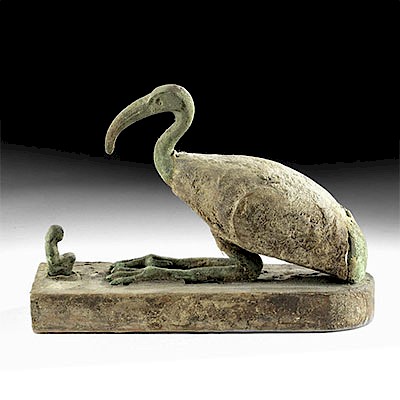6th C. Viking Silver BracteatePendant
Lot 82
About Seller
Artemis Gallery
686 S Taylor Ave, Ste 106
Louisville, CO 80027
United States
Selling antiquities, ancient and ethnographic art online since 1993, Artemis Gallery specializes in Classical Antiquities (Egyptian, Greek, Roman, Near Eastern), Asian, Pre-Columbian, African / Tribal / Oceanographic art. Our extensive inventory includes pottery, stone, metal, wood, glass and textil...Read more
Estimate:
$2,000 - $3,000
Absentee vs Live bid
Two ways to bid:
- Leave a max absentee bid and the platform will bid on your behalf up to your maximum bid during the live auction.
- Bid live during the auction and your bids will be submitted real-time to the auctioneer.
Bid Increments
| Price | Bid Increment |
|---|---|
| $0 | $25 |
| $300 | $50 |
| $1,000 | $100 |
| $2,000 | $250 |
| $5,000 | $500 |
| $10,000 | $1,000 |
| $20,000 | $2,500 |
| $50,000 | $5,000 |
| $100,000 | $10,000 |
| $200,000 | $20,000 |
About Auction
By Artemis Gallery
Oct 31, 2019
Set Reminder
2019-10-31 10:00:00
2019-10-31 10:00:00
America/New_York
Bidsquare
Bidsquare : Fine Antiquities, Asian, Ethnographic Art
https://www.bidsquare.com/auctions/artemis-gallery/fine-antiquities-asian-ethnographic-art-4581
Our Halloween Day auction features classical antiquities, ancient and ethnographic art from cultures encompassing the globe, plus fine art. Artemis Gallery info@artemisgallery.com
Our Halloween Day auction features classical antiquities, ancient and ethnographic art from cultures encompassing the globe, plus fine art. Artemis Gallery info@artemisgallery.com
- Lot Description
Northern Europe, Scandinavia, pre-Viking or early Viking period (often called Migration period or Germanic Iron Age), ca. 6th to 7th century CE. A gorgeous and rare bracteate pendant, made from 98% pure silver. The surface is decorated with granulated and filigreed motifs of interlocking curls and bosses. The top has a folded-over loop, also decorated with filigreed ornament. A modern cord with sterling silver clasp is threaded through to make the piece wearable as a necklace. Pendants like this one were made to be worn around the neck as a type of amulet or sewn onto clothing, and were frequently made of melted down coinage traded north from the Mediterranean. Size: 1.2" W x 1.45" H (3 cm x 3.7 cm); length of cord: 19" L (48.3 cm)
Filigree and granulation are among the oldest goldsmithing techniques. The techniques involved include twisting silver wires and soldering incredibly tiny beads comprised of the same precious metal onto the surface of the piece of jewelry. This very complicated technique requires painstaking attention to detail that relatively few jewelers have ever mastered. Ancient civilizations such as the Mesopotamians, Greeks, and Etruscans developed the methodology; filigreed and granulated jewelry continued to be popular in the Roman empire, and was also sought after by the Slavs, Anglo-Saxons, and Vikings, remaining popular throughout the Middle Ages. In fact, modern jewelers still utilize these ancient goldsmithing techniques.
Provenance: private New York, New York, USA collection
All items legal to buy/sell under U.S. Statute covering cultural patrimony Code 2600, CHAPTER 14, and are guaranteed to be as described or your money back.
A Certificate of Authenticity will accompany all winning bids.
We ship worldwide and handle all shipping in-house for your convenience.
#146699Excellent condition with very slight bending to form. Rich patina. Ancient pendant with modern cord to make it wearable!Condition
- Shipping Info
-
All shipping is handled in-house for your convenience. Your invoice from Artemis Gallery will include shipping calculation instructions. If in doubt, please inquire BEFORE bidding for estimated shipping costs for individual items.
-
- Buyer's Premium



 EUR
EUR CAD
CAD AUD
AUD GBP
GBP MXN
MXN HKD
HKD CNY
CNY MYR
MYR SEK
SEK SGD
SGD CHF
CHF THB
THB













